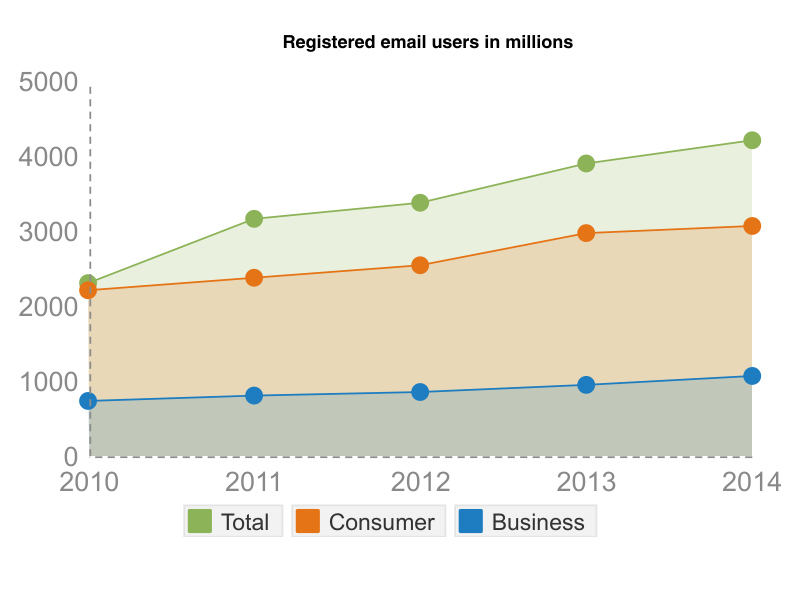Does email marketing work?
I‘m often asked this question by people I meet at events. It’s also not rare for it to pop up during conversations with clients new and old alike. I’d imagine…
I‘m often asked this question by people I meet at events. It’s also not rare for it to pop up during conversations with clients new and old alike. I’d imagine this is because it can be difficult to grasp some of the less tangible benefits of email marketing and to spot why a campaign isn’t quite as effective as it should be. Email, whether used for marketing or otherwise, hasn’t had a good reputation for a while.
Why does this question come up so often?
I think it stems partially from the fact the media and marketers are obsessed with grabbing our attention by telling us stuff is dead; unfortunately, the headline often sticks with us. The same cannot be said for the meat of the content, which often proves the opposite of the attention-grabbing headline.
As technology has sped up all aspects of our lives, including our ability to communicate with each other, our patience has all but evaporated; we expect instant satisfaction, which includes from our marketing efforts.
Many businesses give up after the first email if they don’t get the response they wanted. But like any marketing exercise, it’s about building trust and a relationship with your audience by providing them with relevant information and making them offers to overcome their inertia. This type of marketing is not a one-hit thing.
That’s not to say communication habits aren’t changing. The move from desktop to mobile has impacted the way we use email, and there’s been an upsurge in the use of chat and text-based services. Even with this trend, email still provides the highest conversion rate.
As with everything in life, things evolve over time. You need to keep up with developments and be ready to pivot.
Let’s take a look at some data
Based on the number of accounts that have been used in the last three months, the number of active email accounts is still growing.

The volume of sent email is also still on the rise for both consumers and businesses. According to estimates, approximately 65% of email sent is spam. This figure has remained steady for several years. The same is true of open rates, which have remained fairly static across all sectors. This means that year-on-year, more email is sent and more email is opened.
And to top that off, most surveys find between 60-80% of respondents state their preferred method of communication from brands is email.

Even with so much email flying around, it is still an effective option for most businesses. Research shows that email has a higher conversion rate (3.31%) than search, social or advertising, and an average order value of $113.73. Although this is the lowest out of all four, it’s not by much.
Search: $125.12
Social: $119.67
Advertising: $121.07
Email: $113.73
Source: Monetate
Are your efforts being sabotaged?
There are a few reasons why you may not have had success with your email marketing. Getting to the bottom of these will help you create a solid foundation for successful campaigns time and time again.
- Take a look at how you’ve built your list and who is on it. The list needs to be alive and well-targeted to the right audience for your product or service. If it’s not, you won’t convert people.
- Are you expecting too much, too soon? When people first sign up to your list, they aren’t guaranteed to buy straight away. You’ll have better chances if you’re already a trusted brand in their eyes or you’re marketing through somebody else’s list who is trusted by them. Some impulse buys can also give early results.
- Are you providing interesting, relevant content and talking to your subscribers in their language? The biggest reason stated for unsubscribes is “emails weren’t relevant to me”. Knowing your audience well enough means standing in their shoes and figuring out what they need.
- Have you tested timings, subject lines, frequency, calls-to-action and personalisation? All of these make a big difference to the effectiveness of your campaigns.
- Just like your website, your email marketing efforts need to be optimised for mobile. The amount of emails opened on handheld devices is increasing significantly every year, whilst desktops are seeing a sharp decline.

Email works, when used right
There’s still a large segment of the global population using email for both personal and commercial purposes. More than anything else, it’s important to understand there’s no one-size-fits-all marketing plan for any business. Email marketing may not be right for your niche or business demographics, but it is by no means dead. It’s still a great tool, provided that you use it right.
The best way to work out how is to take a deep dive into the data and research you have about your audience. Find out who they are, what they react to and what they need. Once you have your customer profiles (more commonly referred to as “personas” in this context) are created and validated, you can start testing different kinds of approaches for your campaign.
So, to answer the initial question, email marketing does still work. I’ve created enough successful marketing campaigns myself to say that with confidence. It’s also not showing any signs of dying. Being able to carry a conversation with your readers and promote offers are effective marketing tools, in both Business-to-business (B2B) and Business-to-consumer (B2C) contexts.
Writing off an entire set of tools just for sake of click-bait, telling people not to use tools that do still work, is irresponsible. Rather, we should be discussing how to best adapt them to an ever-changing landscape.
I’ll be tackling the topic of personas next week.
Catch you then.
Sources
All 2014 data estimated from Q3 results
The Radicati Group
IgnitionOne
Graphs produced in Piktochart.com
If you enjoyed reading this blog post, check out similar ones in the sidebar. Feel free to get in touch with to chat about your latest project ideas - we love a good excuse for more tea.

